Wildlife Encounters In The Methow: A Natural History Intensive
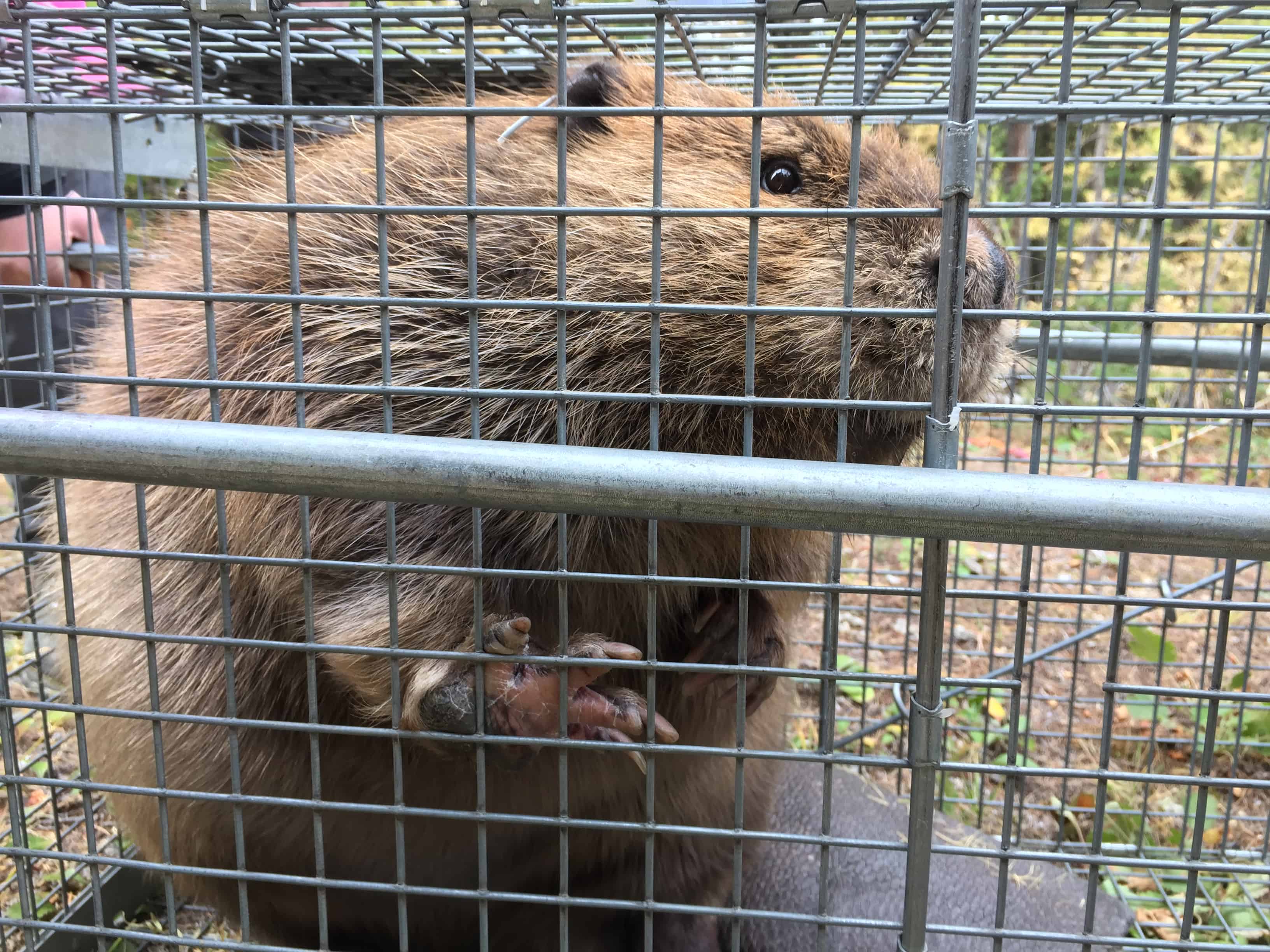
Chompers and Lewisa, the new beaver residents of Beaver Creek, quickly became much more active as their wire cages were placed in the cold creek, splashing about and looking to explore. The beavers looked on disdainfully as we humans created a small dam in the creek, to give them a suggestion of where to build their new home. We then opened their cages and they immediately swam out, eagerly exploring their new territory.
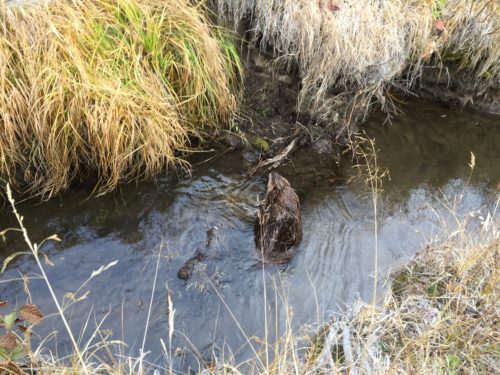
The NCI graduate cohort was on our Fall Natural History Intensive. We spent a week in the Methow Valley, observing classes at Classroom in Bloom (a community garden that works in conjunction with the Methow Public Schools) visiting salmon restoration sites, printmaking, and continuing our coursework. On this day, we had the opportunity to help out with the Methow Beaver Project. We had started the day at the Winthrop Hatchery, where beavers from the Methow Valley Restoration Project were held in the time between being removed from problematic areas (areas where beaver dams would flood homes or buildings) and being moved to new homes where the ponds they create would benefit the entire ecosystem. Beaver ponds not only create vital open habitat that increase biodiversity, they also act as a storage area for fresh water, decreasing flood possibility, decreasing erosion, and recharging water aquifers.
We followed Julie, Jeremy, Kate and the beavers to the turnoff of an unmaintained forest service road, and then carried the three beavers about a half mile down a trail to their new home on the middle fork of the (aptly named) Beaver Creek. They were surprisingly calm as they were transported down the bumpy, brushy trail to their new home. Weighing between 45 and 55 pounds, we were thankful to have the entire cohort of grads to take turns carrying the awkward metal cages.
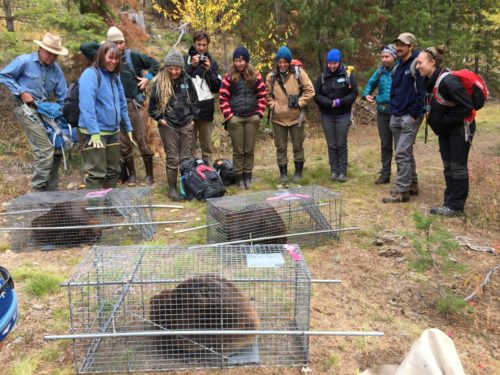
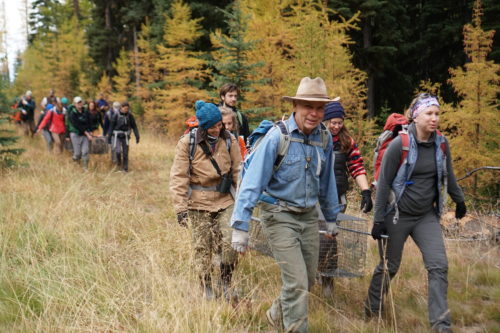
The beavers remained seemingly unfazed the entire hike. Benney, a male, was released first, at a site downstream, and then Chompers, and Lewisa, a male and female pair who seemed to bond at the hatchery, were released together at what the project had deemed a suitable habitat. As the group departed, I took one look back at the small, gangly stream that was Beaver Creek and imagined what it could look like in a year, potentially a beautiful pond that creates habitat and restores water aquifers and groundwater.
Our next stop was the house of Kent Woodruff, USFS biologist and local go-to for all things wildlife, who had a surprise waiting. As we stood around his picnic table eating grapes from his garden, Kent brought over a cardboard box. He set it on the table and as we all peered in, the head of a Prairie Falcon popped out.
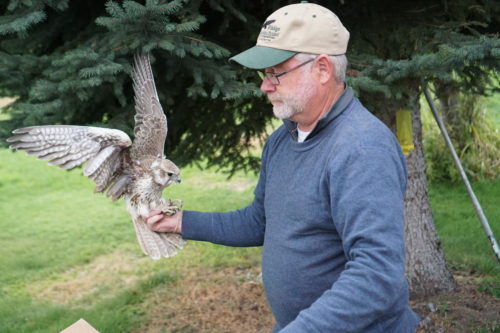
Kent showed Smokey, C16’s avid birder, how to hold the bird, and as she held it by its feet, Kent explained that the bird had been found tangled in a fence off of the highway. Kent was called to care for the bird and as he talked, he showed us how to use chopsticks to feed it raw pork soaked in an electrolyte solution. Kent’s goal was to keep the bird healthy while arranging its transportation to the veterinary hospital.
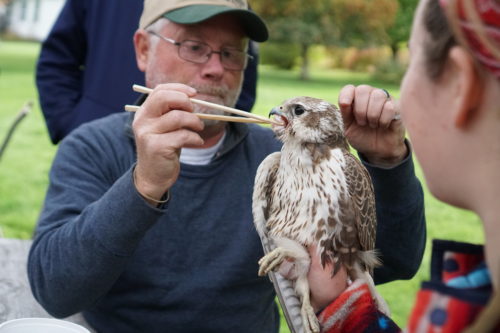
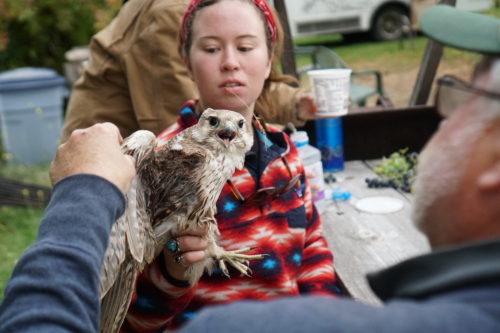
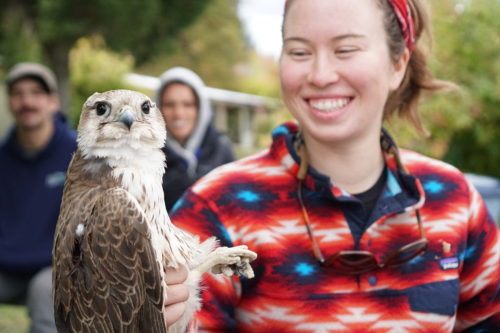
Our wildlife adventures continued the following day. We drove up to the Chelan Ridge Hawkwatch International raptor migration observation site with Kent. A weather front was passing through, and winds at “the rock” had been measured at 70kph earlier in the day. “The rock” was the high point on an exposed, jagged ridge where Hawkwatch observers counted and identified birds as they flew southbound for the winter. The graduate cohort bundled up in all their layers and hiked up to the site, where TC and DJ, bird-counters, told us all about the birds they’d been seeing and changes that bird migrations have been experiencing as a result of climate change. As we talked over the winds, a juvenile Northern Harrier floated past us, taking advantage of the southbound draft. An adult Sharp-shinned Hawk flew past down below our perch, moving much faster than the Harrier had. As we retreated downhill away from the gusting winds, a Red-tailed Hawk soared above, scoping out the observers before making its way southbound as well.
Written by Hanna Davis, Cohort 16 graduate student. All photos courtesy of Andrew Franks-Ongoy.

